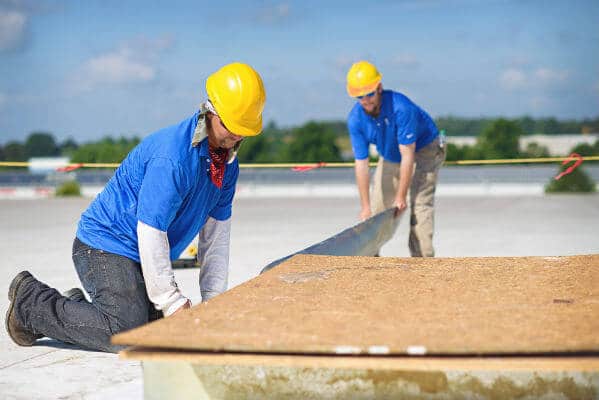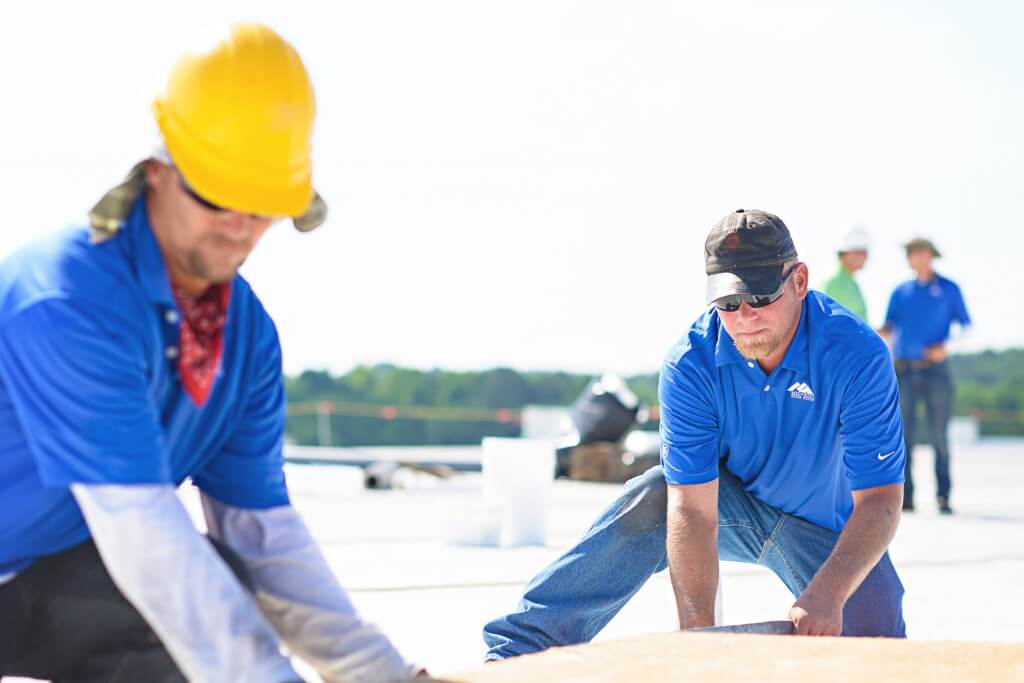Why You Need A Roofer Onsite When You Install Your HVAC System


It’s common to place the heating, ventilating and air conditioning (HVAC) systems for large buildings on the roof.
A successful rooftop HVAC installation usually involves the collaboration of an entire team of workers, so that issues related to the roof, structures, electrical and HVAC can be discussed beforehand. If an HVAC system is not coordinated properly, there can be significant problems from the installation or operation of the system.
Here are three things to watch for.
PROBLEM #1: Excessive Weight
A large HVAC or condenser system that is set on top of the roof, as opposed to the structure, can bear too heavily on the roof, penetrating the membrane, making the area more vulnerable to developing leaks.
SOLUTION: Have a specialized roofing contractor onsite before or during installation of an HVAC system if possible, to advocate for your roofing system. Make sure to have them onsite for regular inspections of the roof in general, at least twice a year. Having an HVAC system on the roof means that there will be roof top traffic that can result in damage to the roof system. Regular roof inspections can repair these damage areas before they become major problems.
PROBLEM #2: Condensation
Vaporized water from the HVAC system can cause the same problems as ponding rain water if it collects on the roof; it can contribute to accelerated aging of the roof material and lead to premature leaks. Constant moisture can also lead to mold and vegetation growth, which can comprise the roof system.
SOLUTION: Have a contractor install an interior or exterior discharge lines or pipes from the HVAC unit to the nearest drainage system.
PROBLEM #3: Damage from Human Traffic
HVAC repair men and women are usually not trained to protect the roof system during installation or maintenance. Punctures to the roof or improperly sealed flashing, caused during the installation process, can lead to a damaged membrane and eventually to leaks.
SOLUTION: Its best to have a trained roofer on site during any installation or repair work to observe any concerns and assist with opening up the roof for installation of curbs or pipes. Damage to vulnerable areas of the roof can also be avoided by installing walk pads on areas where there is heavy foot traffic.
In an era where climates can fluctuate rapidly, heating and air conditioning is a must. But it should not – and does not have to – come at the expense of roof system. Make sure to enlist a full team of qualified contractors when installing or maintaining your HVAC system, including a rooftop specialist.
LIKE WHAT YOU JUST READ?
Sign up for our newsletter to get fresh articles, updates and more!
Assess, Report and Decide: Get to Know Your New Building’s Roof
If you’re considering buying a new building, the very first item on your list should be to get an assessment of the roof’s condition. This analysis can prevent surprises down the line and—if the roof needs work—it can have a dramatic effect on the price you wind up paying for the building.
Why You Need A Roofer Onsite When You Install Your HVAC System
It’s common to place the heating, ventilating and air conditioning (HVAC) systems for large buildings on the roof. A successful rooftop HVAC installation usually involves the collaboration of an entire team of workers, so that issues related to the roof, structures, electrical and HVAC can be discussed beforehand. If an HVAC system is not coordinated…

